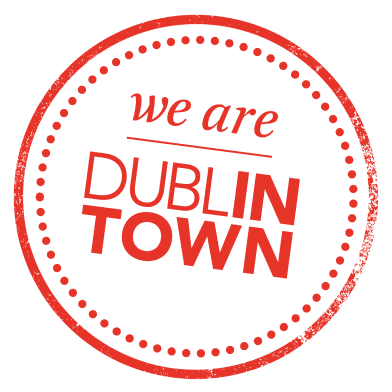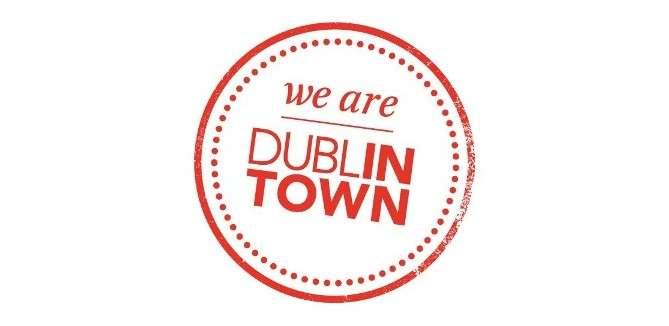What’s In Store For Dublin? The Future Is In Our Hands

- Tue 18 August, 2020
In January 2020, the future for the Dublin city appeared bright. While retail was in retreat it was consolidating in city centres as people combined shopping, socialising, and other leisure pursuits. Research showed that Dublin’s online purchases were showing the first signs of moderating. City centre footfall rose in 2019 particularly after 5pm each evening, and increased environmental awareness augured well for the city. However, COVID-19 has hit city centre businesses hard. Inevitably at a time of uncertainty there will be speculation about what lies ahead. The crisis has thrown previous assumptions in the air and provides an opportunity to re-imagine a better city.
We have reasons for optimism for the city’s future post-COVID, the challenge is to maintain the city’s vibrancy until that time. This requires renewed focus on how to help as many of the city’s businesses survive as possible. Ultimately, businesses need sales more than they need subsidies, more needs to be done facilitate trade within the city centre. We must consider public transport capacity and more positive messaging around public transport use. We need to facilitate the safe and controlled return of office workers, perhaps through a hybrid of office and remote working, particularly in the initial stages. Ultimately, creativity and innovation in the workplace will again require teamwork and interaction. As human beings we need social engagement for our mental health and the city must be open and welcoming for those returning to work.
So here are some cold hard facts facing Dublin city centre currently. Footfall to the week ending 9th August 2020 was 56% of the same week in 2019.
Retail trade is down, and hospitality trade is down further. The northside is down and the south side down further as a tourist is five times more likely to head south than north in Dublin city. There are also more offices south of the Liffey and the 230,000 office workers in Dublin 1 or 2 pre-COVID are the bedrock of trade in the city. However, office occupancy is currently 25% of its pre-COVID level. This is not likely to rise much above 40% before a resolution to the COVID crisis.
67% of those visiting the city to spend money used public transport but public transport capacity has been halved. One-third of city visitors must find alternative transport or stay at home. Government messaging around public transport is negative and subject to change. No wonder people are more nervous than they need be about using it.
The reality is that we are seeing the fruition of trends that had become increasingly evident in recent years. Retail has been in retreat for some time with all retail destinations experiencing a decline. In addition to an increase in online retail, people increasingly shied away from material goods and preferred to spend their money on experiences and leisure pursuits. In this context, retail and particularly large international chains were likely to be challenged. COVID has elevated these trends, so rather than experiencing change over 5 to 10 years, we are seeing it over 5 to 10 months.
The second major emerging trend pre-COVID was increased evening and night-time use of cities including Dublin. Dublin saw an increase of 20% in restaurants between 2016 and 2019, all space previously occupied by retailers. More people dined in Dublin than shopped here, with far more people going for a meal than a drink. Since the lifting of restrictions however, Dublin’s evening footfall has not recovered. By 7.30pm only one-third of the people who were in the city at 5pm remain. We may well see a return to greater evening use post-COVID, however, we may not have sufficient restaurants, cafes, and bars open at that time to meet the demand.
There is a rule of thumb that when a street or district reaches 25% vacancy, i.e. one in four units is empty, the street becomes unattractive and people stop visiting. Viable businesses then become vulnerable. There is currently no long list of businesses ready to occupy the city’s vacant units. When restaurant and retail skills are lost, units will be left empty for a long time slowing the city’s recovery further.
We need to think creatively to re-imagine how we use the city.
We need to facilitate pedestrian zones in the city on a 7 day week basis, encourage greater outdoor seating and use of our streets with branded furniture, and promote the city with particular reference to Monday to Wednesday trade as they have done in the UK.
Businesses will not make ends meet on 50% of their turnover, therefore in addition to the wage subsidy scheme we need a practical system for burden sharing that allows consumer facing businesses meet their overheads in the short term. This can be done but will need compromise and fresh thinking.
COVID has not blunted the need to address climate change or sustainability. Environmental and economic sustainability are inextricably linked. Indeed, COVID may well induce increased reflection on just how fragile our world and lifestyles are.
We need to plan for the future but must now plan in a hurry. We must create a sustainable 21st century city, with green infrastructure, street planting to absorb rainfall to avoid overflow in our drainage and sewerage systems, sustainable last mile delivery to shops, shared deliveries from shops to homes, which in turn will facilitate increased sustainable transport to the city. Investment in public transport must not be stalled but rather accelerated to meet the demand which will re-emerge with the ending of the current crisis.
Cities are sustainable. With the increasing desire to walk or cycle to work we can look forward to increased demand for residential use and this needs to be planned. Too much residential use, especially at ground level will undermine commercial vibrancy as happened in London following the introduction of protected development rights. Land use must also be planned to avoid conflicts between commercial and residential interests, particularly in the evening and night-time economy. This can be achieved but requires considered consultation and engagement.
Our future is in our hands at this point. We can build a vibrant welcoming city that continues to attract investment and becomes a 21st century exemplar. To achieve this, we need a shared vision and engagement the stretches from central Government to local Government, to the business community and to residents. We owe it to ourselves and our children to get this one right. If we succeed we will have a bright, prosperous and inclusive city, if we get it wrong we will be playing catch up for decades.

